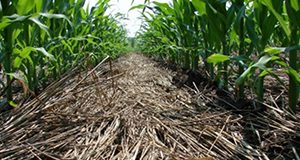Organic farming is one of the fastest-growing segments of the agricultural industry in the United States and in Florida. Conservation tillage is often employed to reduce soil erosion, improve physical and biological properties of soil, and increase water use efficiency. This 5-page article aims to provide recommendations to row crop farmers who wish to implement conservation tillage practices during their transition to a certified organic system. Written by D. L. Wright, J. Moyer, D. Treadwell, I. M. Small, and S. George, and published by the UF/IFAS Agronomy Department, revised November 2020.
https://edis.ifas.ufl.edu/ag246
Tag: Conservation Tillage
Agricultural Management Options for Climate Variability and Change: Conservation Tillage (AE486)
 This 4-page fact sheet focuses on the use of conservation tillage in crop production systems as a strategy to minimize the risks associated with climate variability and change and to improve resource-use efficiency. Written by Kip Balkcom, Leah Duzy, Daniel Dourte, and Clyde Fraisse, and published by the UF Department of Agricultural and Biological Engineering, June 2012.
This 4-page fact sheet focuses on the use of conservation tillage in crop production systems as a strategy to minimize the risks associated with climate variability and change and to improve resource-use efficiency. Written by Kip Balkcom, Leah Duzy, Daniel Dourte, and Clyde Fraisse, and published by the UF Department of Agricultural and Biological Engineering, June 2012.
http://edis.ifas.ufl.edu/ae486
